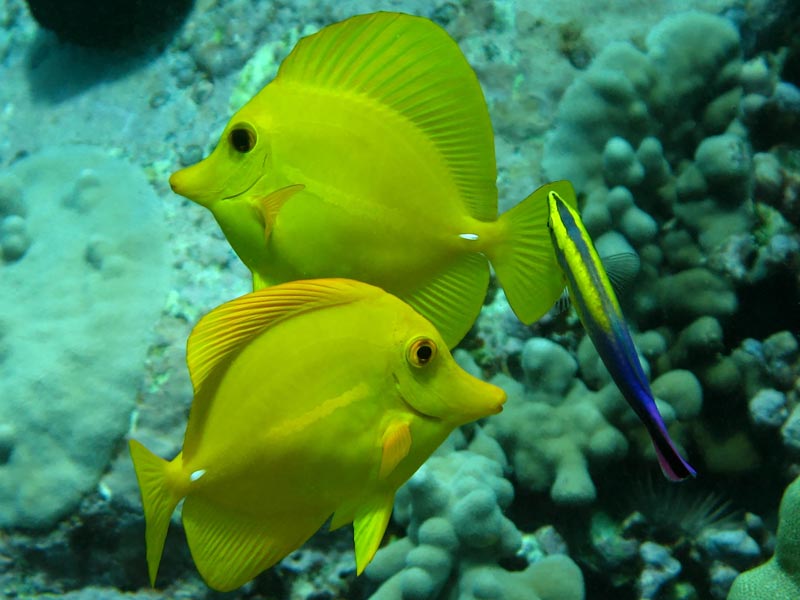Yellow Tang
lau-ī-pala
Zebrasoma flavescens
Of all the Hawaiian reef fish, the surgeonfish or tangs are the most plentiful and prominent. At the base of their tail fin, they have two knifelike spines or scalpels on each side. These scalpels lie flat until they are ready to fight and they can quickly flip them out, which can cause serious injury to predators or rivals. The common name "surgeonfish" was from the deep and painful cuts they can inflict on humans, usually removing them from nets or spears. The scalpels are usually brightly colored, and peaceful divers have little to fear.
Surgeonfishes are usually oval shaped with narrow and compressed bodies, and their scales are very small. They launch themselves with winglike beats of their pectoral fins. Most of the surgeonfish feed on algae, and their mouths scrape the surface of rocks and dead coral or they nibble on leafy seaweeds. Since algae grows best in bright light, most surgeonfishes enjoy the shallow waters. There are 23 species of surgeonfish in Hawaiian waters.
The Yellow Tang is abundant in Hawaiʻi, and schools of fish can be seen gliding over the reefs. These vibrant fish are entirely yellow except for a white tail spine. The thin and delicate juveniles have greatly elevated dorsal and anal fins. They do not school like adult Yellow Tangs, and are commonly found in stands of finger coral. The species name means "yellow", and the Hawaiian name means "yellowed ti-leaf". They grow up to 8 inches.
